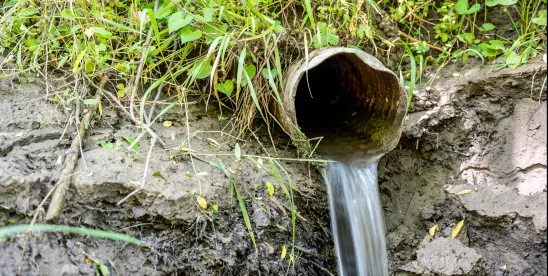Juan-Carlos Rodriguez is reporting on DOJ's and EPA's brief arguing that the Supreme Court should leave alone a split Ninth Circuit decision upholding a NPDES permit condition prohibiting the permittee, the City and County of San Francisco, from “causing or contributing” to any violation of “applicable water quality standards”.
You might recall that when the City and County filed their appeal in February I predicted that this case would be responsible for EPA's, DOJ's and the Ninth Circuit's third consecutive defeat in our nation's highest court.
This case now has the current Assistant Attorney General for the Environment and Natural Resources Division of the DOJ squaring off against, among others, one of his most respected predecessors, now in the private sector, and fifteen industry groups, including the American Chemistry Council, the American Farm Bureau Foundation and the United States Chamber of Commerce, who are joined by a dozen or so water supply and conservation associations, including the National Association of Clean Water Agencies, and more than a dozen municipal water and sewer providers, including the Boston Water and Sewer Commission.
The United States' brief somewhat successfully addresses the City's and County's complaint that the “applicable water quality standards” part of EPA's “narrative prohibition” is too vague. The United States explains that an applicable California law defines “pollution”, “contamination”, and “nuisance” so the City and County know or should know exactly what is prohibited.
But what EPA and DOJ don't say one word about in their brief is what “cause or contribute to" is supposed to mean. Doesn't it stand to reason that any discharge of a “pollutant” “contributes to” “pollution” of the water into which the pollutant is discharged? And, if that's the case, why doesn't this “narrative prohibition” prohibit any discharge of any pollutant in any quantity, regardless of whether anything can be done about it?
I continue to think that's going to be a pill the Supreme Court won't swallow. After all, it was only about a year ago that Justice Alito delivered our nation's highest court's opinion in Sackett v. EPA rejecting EPA's (and the Ninth Circuit's) interpretation of the term “Waters of the United States” in the Clean Water Act as “hopelessly indeterminate” in the face of the due process requirement that penal statutes be defined "‘with sufficient definiteness that ordinary people can understand what conduct is prohibited’ and ‘in a manner that does not encourage arbitrary and discriminatory enforcement.’”
Only a few years earlier, the nation's highest court overturned another Ninth Circuit Clean Water Act decision in Hawaii Wildlife Fund v. Maui on similar grounds.
There is no way that “cause or contribute to violations of applicable water quality standards” is any less “hopelessly indeterminate” than EPA's definition of “Waters of the United States” before the Supreme Court's Sackett opinion. And the penalties, and opportunities for citizen suits, are as potentially draconian for violations of NPDES permits as they are for violations of “dredge and fill” permits of the sort that EPA would have required of the Sacketts.
If the Supreme Court agrees to hear this case, as I expect it will, I'd bet pretty much anything on the outcome.
Contrary to San Francisco's argument that the narrative provisions are too vague and general for the city to really know how to comply with, the agency said, the limitations at issue "adequately specify the limits to which petitioner's discharges must conform." "The permit itself makes clear what those applicable water quality standards are," the EPA said in a brief in opposition to the city's petition. "Those standards, in turn, establish specific limits to which petitioner's discharges must conform."
https://www.law360.com/environmental/articles/1825263?nl_pk=5370543f-5eb5-4a4e-9280-bed




 />i
/>i

